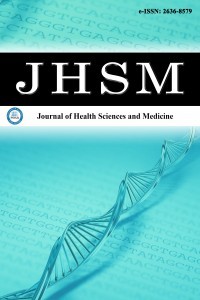1.
Herrera D, Retamal-Valdes B, Alonso B, et al. Acute periodontallesions (periodontal abscesses and necrotizing periodontaldiseases) and endo-periodontal lesions. J Periodontol. 2018;89Suppl 1:85-102.
2.
Zehnder M, Gold SI, Hasselgren G. Pathologic interactionsin pulpal and peri- odontal tissues. J Clin Periodontol.2002;29(8):663-71.
3.
Papapanou PN, Sanz M, Buduneli N, et al. Periodontitis:Consensusreport of work group 2 of the. 2017 World Workshop on theclassification of periodontal and peri-implant diseases andconditions. J Periodontol. 2018;89 Suppl 1:173-82.
4.
Chapple IL, Lumley PJ. The periodontal-endodontic interface.Dent Update. 1999;26(8):331-6,338,340-1.
5.
Cohen J. Statistical power analysis for the behavioral sciences.Hillsdale, New Jersey:Lawrence Erlbaum Associates;1998.
6.
Walton RE. Vertical root fracture:Factors related to identification.J Am Dent Assoc. 2017;148(2):100-5.
7.
Ruetters M, Gehrig H, Kronsteiner D, et al. Prevalence of endo-perio lesions according to the. 2017 World Workshop on theclassification of periodontal and peri-implant disease in auniversity hospital. Quintessence Int. 2022;53(2):134-42.
8.
Altaf A, Jeelani M, Basher A. Assessment of prevalence ofEndo-perio lesions among patients of known population:Anobservational study. Inter J of App Dent Sci. 2019;5(3):111-3.
9.
Cucolo FCC, Bonvalente MC, Barroso EM, et al. Endo-periolesions prevalence in non-molar and molar teeth:a pilot study. RevOdontol UNESP. 2021;50:e20210037.
10.
Prashaanthi N, Arvina R, Shantha Sundari KK. Prevalence ofendo perio lesion- an institutional study. Int J Dentistry Oral Sci.2021;8(6):2858-62.
11.
Dako T, Lazar AP, Mâru MA, et al. Prevalance of Endo-PerioLesions among Adult Patients, an observational study. RomanianJ Med and Dent Edu. 2021;10(3):16-21.
12.
Robo I, Heta S, Haxhiu E, et al. Evaluation of endo-perio lesionsaccording to different specific classifications. SN Comp Clin Med.2022. doi:10.21203/rs.3.rs-1849923/v1
13.
Kim E, Song JS, Jung IY, et al. Prospective clinical study evaluatingendodontic microsurgery outcomes for cases with lesions ofendodontic origin compared with cases with lesions of combinedperiodontal-endodontic origin. J Endod. 2008;34(5):546-51.
14.
Fan X, Xu X, Yu S, et al. Prognostic factors of grade 2-3 endo-periodontal lesions treated nonsurgically in patients withperiodontitis:a retrospective case-control study. BioMed Res Inter.2020;2020:1592910.
15.
Simon JH, Glick DH, Frank AL. Predictable endodontic andperiodontic failures as a result of radicular anomalies. Oral SurgOral Med Oral Pathol 1971;31(6):823-26.
16.
Xuelian T, Lan Z, Dingming H. [Intentional replantation for thetreatment of palatal radicular groove with endoperiodontallesionin the maxillary lateral incisor:a case report]. Hua Xi Kou QiangYi Xue Za Zhi. 2017;35(4):448-52.
17.
Estrela C, Bueno MR, Azevedo BC, et al. A new periapicalindex based on cone beam computed tomography. J Endod.2008;34(11):1325-31.
18.
Jaro´n A, Gabrysz-Trybek E, Bladowska J, et al. Correlation ofpanoramic radiography, cone-beam computed tomography,and three-dimensional printing in the assessment of the spatiallocation of impacted mandibular third molars. J Clin Med.2021;10(18):4189.

